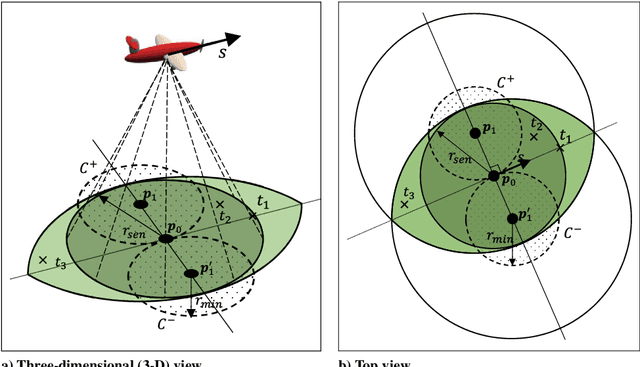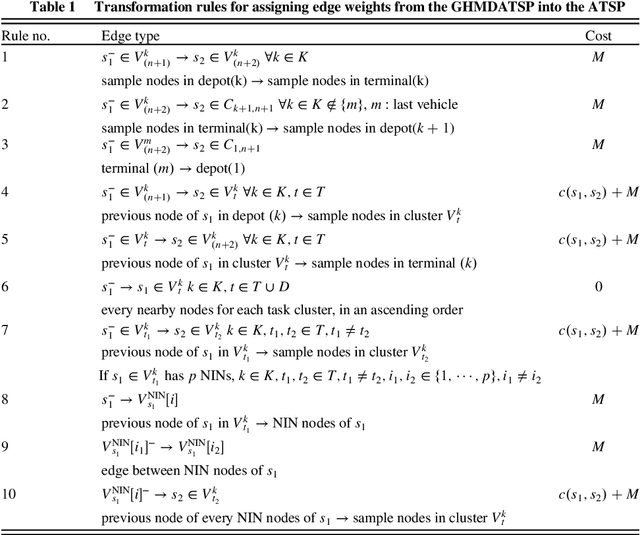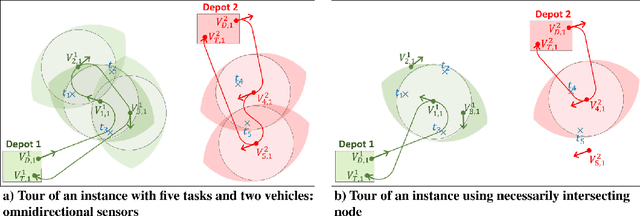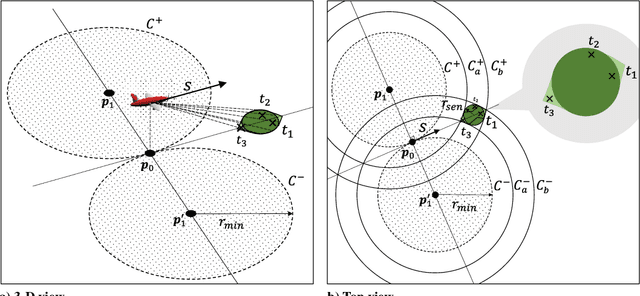Dae-Sung Jang
Sampling-Based Tour Generation of Arbitrarily Oriented Dubins Sensor Platforms
Aug 09, 2018



Abstract:This paper describes a formulation and develops a novel procedure for a fleet of unmanned aerial vehicles (UAVs) from the perspective of remotely executable tasks. In a complex mission environment, the characteristics of vehicles can be different in terms of sensing capability, range, direction, or the motion constraints. The purpose of this paper is to find a set of paths that minimizes the sum of costs while every task region is visited exactly once under certain reasonable assumptions. The heterogeneous multi-UAV path planning problem is formulated as a generalized, heterogeneous, multiple depot traveling salesmen problem (GHMDATSP), which is a variant of the traveling salesman problem. The proposed transformation procedure changes an instance of the GHMDATSP into a format of an Asymmetric, Traveling Salesman Problem (ATSP) to obtain tours for which the total cost of a fleet of vehicles is minimized. The instance of the ATSP is solved using the Lin-Kernighan-Helsgaun heuristic, and the result is inversely transformed to the GHMDATSP-formatted instance to obtain a set of tours. An additional local optimization based path refinement process helps obtain a high-quality solution. Numerical experiments investigate and confirm for the validity and applicability of the proposed procedure.
Optimal Control-Based UAV Path Planning with Dynamically-Constrained TSP with Neighborhoods
Dec 18, 2016



Abstract:This paper addresses path planning of an unmanned aerial vehicle (UAV) with remote sensing capabilities (or wireless communication capabilities). The goal of the path planning is to find a minimum-flight-time closed tour of the UAV visiting all executable areas of given remote sensing and communication tasks; in order to incorporate the nonlinear vehicle dynamics, this problem is regarded as a dynamically-constrained traveling salesman problem with neighborhoods. To obtain a close-to-optimal solution for the path planning in a tractable manner, a sampling-based roadmap algorithm that embeds an optimal control-based path generation process is proposed. The algorithm improves the computational efficiency by reducing numerical computations required for optimizing inefficient local paths, and by extracting additional information from a roadmap of a fixed number of samples. Comparative numerical simulations validate the efficiency of the presented algorithm in reducing computation time and improving the solution quality compared to previous roadmap-based planning methods.
 Add to Chrome
Add to Chrome Add to Firefox
Add to Firefox Add to Edge
Add to Edge